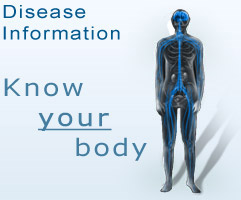Dystrophic epidermolysis bullosa
What is dystrophic epidermolysis bullosa?
Dystrophic epidermolysis bullosa is a rare hereditary skin condition. The skin of patients with dystrophic epidermolysis bullosa is more fragile than normal. Minor injury causes blisters which often leave scars when they heal. Usually dystrophic epidermolysis bullosa is fairly mild, causing little more than a minor inconvenience, but occasionally it can be severe, affecting the mouth, gullet and eyes in addition to the skin. Dystrophic epidermolysis bullosa is not an infection, it is not contagious and it is not due to an allergy. There are other types of epidermolysis bullosa, simplex and junctional, but if you have dystrophic epidermolysis bullosa, you will not develop another type of epidermolysis bullosa at a later stage.
What causes dystrophic epidermolysis bullosa?
The two outermost layers of skin, the epidermis and the dermis, are held together by a variety of proteins. In dystrophic epidermolysis bullosa, there is a genetic fault in the structure of type 7 collagen, one of the most important of these proteins. Weakened type 7 collagen is unable to join the epidermis and dermis together as firmly as it should. When the skin of patients with dystrophic epidermolysis bullosa is rubbed, the two layers of skin separate, and fluid accumulates in the gap between them, forming a blister.
Is dystrophic epidermolysis bullosa hereditary?
Yes. Faults in the structure of type 7 collagen are caused by mutations (spontaneous changes) in the gene which carries the instructions for its assembly. A number of these mutations (some dominant, some recessive) have been identified in dystrophic epidermolysis bullosa. Some are common while others are only found in individual families. Both males and females can be affected.
Everyone has two genes controlling the production of type 7 collagen, one inherited from each parent. In the dominant type of dystrophic epidermolysis bullosa, only one of the two genes is faulty.
Dominantly inherited dystrophic epidermolysis bullosa
Any male or female parent, who has dominantly inherited dystrophic epidermolysis bullosa, can pass on the condition to their children. There is a 50% chance that each child of an affected parent will inherit the blistering tendency.
Recessively inherited dystrophic epidermolysis bullosa
Less frequently, dystrophic epidermolysis bullosa is inherited in a recessive fashion. The parents of a person with recessively inherited dystrophic epidermolysis bullosa usually have normal skin. Each unaffected parent has one normal and one abnormal type 7 collagen gene, and is able to make enough normal type 7 collagen to compensate for the weakening effect of the faulty gene. A child with recessive dystrophic epidermolysis bullosa has two abnormal type 7 collagen genes; one inherited from each parent, and is unable to make any normal type 7 collagen. Each time the parents of a child who has recessively inherited dystrophic epidermolysis bullosa have another child; there is a one in four chance that the new baby will also have the condition. It is unlikely that anyone with recessive dystrophic epidermolysis bullosa will have affected children. This could only happen if the patient's partner also carried a faulty type 7 collagen gene. Since dystrophic epidermolysis bullosa is a very rare condition, the risk of this occurring is very small indeed.
As there are other, more unusual, inheritance possibilities, detailed genetic testing may be necessary before appropriate genetic counselling can be offered.
What are the symptoms of dystrophic epidermolysis bullosa?
Minor trauma causes painful blisters which tend to leave scars as they heal. The most vulnerable body parts are the knees, ankles, elbows and knuckles. In dominant dystrophic epidermolysis bullosa, blisters sometimes occur at or shortly after birth, but usually they appear for the first time in early childhood. The normal play activities of childhood often cause blistering, but in adults with dominant dystrophic epidermolysis bullosa, blisters are usually infrequent.
Most adults affected by dominant dystrophic epidermolysis bullosa have thickened toenails. In those who are more severely affected, fingernails and toenails may be permanently lost. If blisters occur within the mouth, brushing teeth can be painful, leading to poor dental hygiene and dental caries. Constipation is quite common. A variety of other problems are seen mainly in recessively inherited dystrophic epidermolysis bullosa, but occasionally also in dominantly inherited dystrophic epidermolysis bullosa. These problems may include difficulty with swallowing, some restriction of mouth opening and tongue protrusion, and difficulty straightening the fingers fully. Patients with recessive dystrophic epidermolysis bullosa usually have more fragile skin than patients with dominant dystrophic epidermolysis bullosa, and may develop severe scarring. Blisters can be induced by even the most gentle skin contact: affected babies need careful handling, and special feeding techniques may be necessary.
Skin cancer arising in areas of scarred skin is a possibility, especially in those individuals who have the most severe form of dystrophic epidermolysis bullosa. Regular examinations by a dermatologist are important to ensure that skin cancer is detected and treated at an early stage.
What does dystrophic epidermolysis bullosa look like?
Blisters vary in size. They are fragile and easily damaged leaving raw, moist areas which require dressings. Healed blisters leave pinkish-purple scars (which gradually become fainter) and milia (small pin-head sized creamy-coloured bumps). The nails may become unsightly (thickened and discoloured) or even permanently lost.
How will dystrophic epidermolysis bullosa be diagnosed?
If there is a family history of the condition, the diagnosis is usually straightforward. When the diagnosis is not clear, it may be appropriate to remove a small piece of skin (a biopsy) for detailed testing. For some individuals, it may be possible to distinguish dominant and recessive inheritance patterns by genetic analysis, requiring a blood test.
Can dystrophic epidermolysis bullosa be cured?
In the past 20 years, there has been rapid progress in our understanding of dystrophic epidermolysis bullosa, but at the moment it cannot be cured. Several laboratories around the world are exploring strategies which hopefully will ultimately lead to a cure, although this research may take many more years to come to fulfilment.
How can dystrophic epidermolysis bullosa be treated?
Careful choices of clothing and lifestyle, so as to reduce friction and protect vulnerable areas of skin, will reduce the number of new blisters, but, inevitably, some blisters will still occur. It is usually recommended that blisters are burst with a sterile needle. Antiseptic soaks and creams should be used to prevent infection. Often, dressings are necessary. Ordinary sticking plasters should be avoided as their removal usually tears the skin. Dressings with a silicone skin contact are usually best as they are easy to remove without damaging fragile skin.
If the eyes are affected, simple lubricant ointments are helpful. Good oral hygiene and regular dental examinations are important to help prevent dental decay. Plenty of fruit and vegetables will help prevent constipation, but sometimes gentle laxatives are necessary. Those who are more severely affected should be advised by a dietician.
In severe dystrophic epidermolysis bullosa, physiotherapy can help prevent restriction of movements, but sometimes surgery to free fingers encased in scar tissue may be worthwhile. If a child finds swallowing difficult, a minor operation called a gastrostomy (which involves making a passage to the stomach through the skin) can allow delivery of nutrients directly into the stomach. In adults, simple stretching of the oesophagus (gullet) is usually sufficient to improve swallowing.
What can I do?
A healthy diet, regular dental checks as soon as the first teeth appear and careful skincare are important. If you have an affected child, tell his/her teachers about dystrophic epidermolysis bullosa and make sure they understand that your child may not be able to take part in some of the more physical activities of the school curriculum. If any form of surgery is required, it is important to inform the surgical team of the diagnosis of dystrophic epidermolysis bullosa well before the date of the planned operation so that they can discuss the condition with your dermatologist. Special precautions to care for the skin may be required during anaesthesia and surgery, and the usual surgical dressings may not be suitable.
References
BRITISH ASSOCIATION OF DERMATOLOGISTS. January 2009. Patient information leaflet. Dystrophic epidermolysis bullosa. Website: http://www.bad.org.uk/
 TransmedBanner4.jpg)

